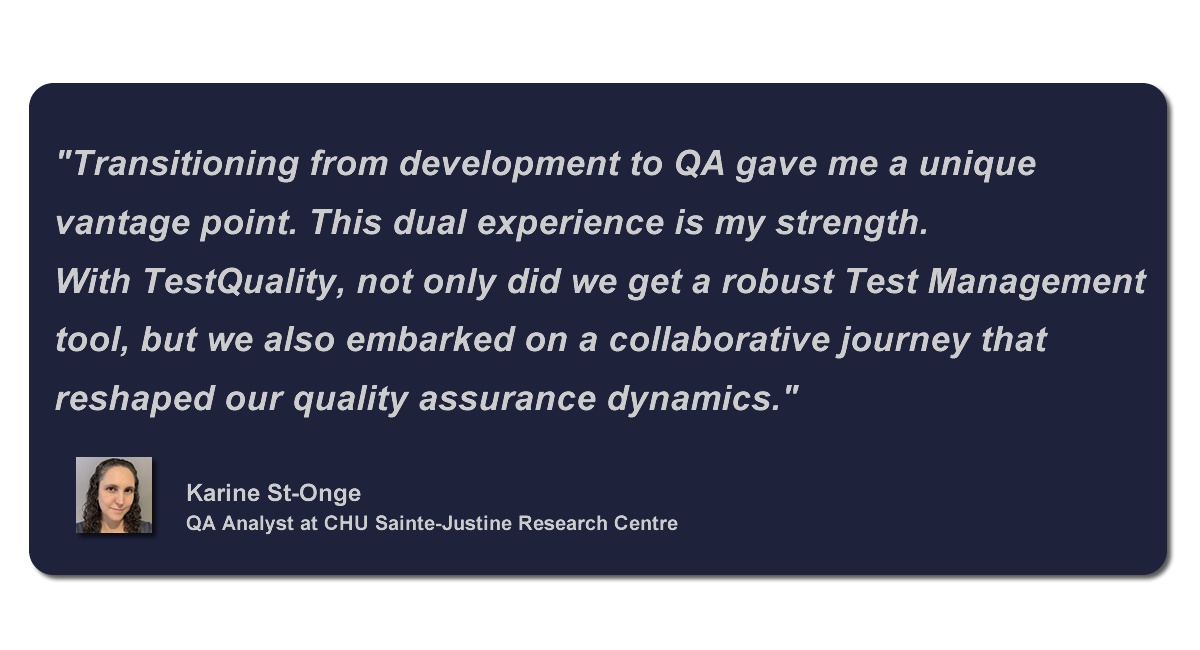Quality Assurance (QA) professionals, comprising QA managers, testers, and developers, form the backbone of the software development lifecycle. Their software testing role is pivotal in ensuring the delivery of robust and error-free software. However, this journey is rife with challenges that demand innovative solutions and collaborative efforts. In this blog post, we'll delve deeper into the distinctive pain points experienced by each group within the QA ecosystem.
1. QA Managers: Balancing Priorities and Resources
QA managers operate at the intersection of strategy and execution. Their challenge lies in orchestrating testing methodologies and efforts within the constraints of time and resources. For instance, when faced with tight deadlines, QA managers must make strategic decisions on test coverage, balancing the need for thorough testing against the pressure to meet project timelines. In cases of resource limitations, managing a skilled testing team and choosing the right testing tools become critical pain points.
Example: Consider a scenario where a QA manager is tasked with testing a major software update within a short timeframe. The challenge is to allocate resources efficiently, focus on high-priority test cases, and ensure the testing team remains agile in responding to unexpected issues.
2. Testers: Navigating Time Constraints and Diverse Testing Scenarios
Testers, often on the frontline of the QA process, grapple with the challenge of executing comprehensive test plans within tight schedules. They must cover a multitude of diverse testing scenarios to ensure the software functions seamlessly across different platforms, browsers, and user environments. Keeping pace with evolving technologies and mastering new testing tools is an ongoing pain point for testers.
Example: Imagine a testing team responsible for ensuring a web application functions seamlessly on various browsers and mobile devices. Testers need to navigate through multiple combinations of browsers, operating systems, and screen sizes, all while meeting project deadlines.

3. Developers: Collaborating for Seamless Integration
Developers play a crucial role in the testing process, ensuring that their code integrates seamlessly into the testing environment. Frequent changes in software requirements and the need for rapid bug fixes can strain the developer-QA collaboration. Bridging the gap between these two teams requires effective communication and mutual understanding.
Example: In an agile development environment, a developer might need to quickly address a critical bug identified by the testing team. The challenge lies in balancing the need for swift resolution with the potential impact on existing code and overall project timelines.
4. Collaboration Challenges: Bridging the Gap Across Teams
Effective communication and collaboration are linchpins for successful software testing. Misalignments in expectations, unclear requirements, or insufficient information sharing can lead to misunderstandings and hinder the identification of critical issues. A culture of open communication is essential to bridge gaps between QA managers, testers, and developers.
Example: Picture a scenario where ambiguous requirements lead to misunderstandings between the development and testing teams. Clear communication channels and regular meetings become crucial in resolving discrepancies and ensuring everyone is on the same page.
5. Automation Complexities: Enhancing Efficiency with Caution
While automation can significantly improve testing efficiency, it introduces its own set of challenges. Testers and developers face complexities in developing and maintaining automated test scripts. Ensuring the relevance of these scripts to changing requirements and handling intricate testing scenarios require continuous effort and expertise.
Example: Consider a project where automated test scripts are implemented to perform regression testing. The challenge is to keep these scripts updated with each software iteration, ensuring they accurately reflect the current functionality and identify any potential regressions.
To navigate these challenges successfully, QA professionals must foster a culture of continuous learning, open communication, and collaboration. Staying updated on industry best practices, leveraging innovative solutions, and embracing adaptability are key strategies for addressing the evolving landscape of software testing. By acknowledging and proactively addressing these pain points, QA managers, testers, and developers can collectively contribute to the delivery of high-quality software products.
6.- Unveiling Tomorrow's Tools: Harnessing Generative AI in Software Testing
As we navigate the challenges of software testing, it's crucial to explore cutting-edge technologies that can revolutionize the testing landscape. Generative AI, a rising star in the tech realm, holds the potential to reshape software testing processes. By leveraging AI-driven algorithms, such as those powering TestQuality.com, QA professionals can benefit from:
- Automated Test Case Generation: Generative AI can automate the creation of test cases by intelligently analyzing software requirements and generating diverse scenarios. This accelerates the testing process and ensures comprehensive coverage.
- Intelligent Defect Prediction: AI algorithms can predict potential defects by analyzing patterns in historical data. This proactive approach allows QA teams to address vulnerabilities before they manifest, contributing to a more robust final product.
- Dynamic Test Environment Simulation: Generative AI can simulate diverse testing environments, enabling QA professionals to test software under various conditions. This ensures that applications perform seamlessly across a spectrum of real-world scenarios.
- Adaptive Test Automation: AI-powered tools like TestQuality.com can dynamically adjust automated test scripts based on evolving requirements. This adaptability enhances the relevance and effectiveness of automated testing in a rapidly changing development landscape.
By embracing the capabilities of Generative AI, QA professionals can enhance their testing arsenal, addressing pain points and navigating challenges with unprecedented efficiency. As technology continues to evolve, integrating Generative AI into software testing processes emerges as a promising strategy for ensuring the delivery of high-quality software products.
7. A Glimpse into TestQuality.com
In the pursuit of overcoming the challenges faced by QA professionals, the utilization of a robust Test Management solution becomes a strategic advantage. Test management solutions like TestQuality.com offer a myriad of benefits:
Efficient Test Planning and Organization:
TestQuality.com streamlines test planning, making it easier for QA managers to organize and prioritize test cases. This ensures a systematic approach, even in the face of tight deadlines.
Collaborative Test Execution:
Facilitating seamless collaboration among testers and developers, TestQuality.com enhances communication channels, reducing the likelihood of misunderstandings and accelerating the resolution of identified issues.
Centralized Test Data Management:
Managing and maintaining test data integrity is a critical aspect of software testing. TestQuality.com provides a centralized repository for test data, ensuring consistency and accuracy throughout the testing process.
GitHub and Jira Driven
TestQuality has been purpose-built for GitHub and Jira workflows so you can easily integrate your testing efforts with your development and QA operations, live and in real time.
Automation Integration:
Addressing the complexities of test automation, TestQuality.com allows for the efficient development and maintenance of automated test scripts. This integration enhances testing efficiency and ensures the relevance of automated tests to evolving requirements.
Real-Time Reporting and Analytics:
TestQuality.com offers real-time reporting and analytics, empowering QA managers with insights into testing progress, bottlenecks, and overall project health. This facilitates informed decision-making and timely adjustments to testing strategies.
SSO to improve Security and User Experience
Securely manage thousands of team user accounts with TestQuality. Single Sign-On is a great way to increase security, user experience, and save costs all at once, and it's not only for large organizations. Small QA teams may also benefit from this feature.
These are just a few of the significant advantages of adopting a test case management platform like TestQuality. Also, many customers have discovered answers to their issues utilizing TestQuality.com, as you can see in our several Case Studies.

In Conclusion: Empowering QA Professionals for Success
In the complex realm of software testing, QA professionals face an array of challenges that demand resilience, innovation, and collaborative spirit. From QA managers orchestrating testing strategies under resource constraints to testers navigating diverse scenarios and developers ensuring seamless integration, each role plays a vital part in delivering high-quality software. Bridging collaboration gaps, adapting to automation complexities, and navigating tight deadlines are shared pain points that require collective efforts.
As we reflect on the multifaceted challenges discussed, it becomes evident that success lies in fostering a culture of continuous learning, open communication, and adaptability. QA professionals must embrace the evolving landscape, staying updated on industry trends, and leveraging innovative solutions to address pain points head-on. By acknowledging these challenges and proactively finding solutions, QA managers, testers, and developers can collectively contribute to the delivery of software that not only meets but exceeds user expectations. Empowered by a commitment to excellence, the QA ecosystem can navigate challenges with agility and resilience, ensuring the seamless delivery of high-quality software products in the dynamic world of software development.
Incorporating a comprehensive Test Management tool like TestQuality.com can significantly alleviate the pain points experienced by QA professionals. By leveraging the features and functionalities of such platforms, QA teams can enhance their testing processes, ultimately contributing to the delivery of high-quality software products.

